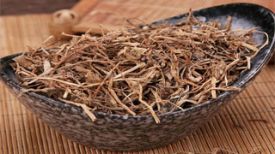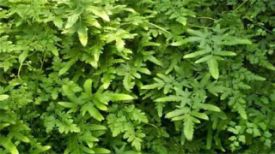Drug name: Ephedra
Nickname: Longsha, Ephedra
Source: Shennong Bencao Jing
Classification: Antitumor drugs
Origin: Hebei, Shanxi, Gansu and other regions
Taste: Warm in nature, spicy and slightly bitter in taste
Meridian: Meridian of the lungs and bladder
Effect: Sweating and relieving external symptoms, promoting lung function and relieving asthma, promoting diuresis and reducing swelling
Indications: Wind cold and cold, chest tightness, wheezing and coughing, feng shui edema, wind cold dampness, Yin gangrene and phlegm nuclei
Character identification
Chinese ephedra: multi branched, with a diameter of 1.5-3mm and a rough texture. The internode length is 2-6cm, the membranous scales are 2-3mm long, the lobes are 3 (sparse 2), and the apex is acute. The medulla of the cross-section is triangular in shape.
Equisetum equisetum: has many branches, with a diameter of 1-1.5mm, and no roughness. The internode length is 1.5-3cm, and the membranous scales are 1-2mm long; Split 2 (sparse 3), with a short triangular shape at the upper part, grayish white in color. The apex is mostly non retroflex, and the base is brownish red to brownish black.
Grass ephedra: in a slender cylindrical shape with few branches; A diameter of 1-2mm, some with a small amount of brown woody stems. The surface is light green to yellow green, with fine longitudinal ridges and a slight roughness to the touch. The nodes are obvious, with an internode length of 2-6cm. There are membranous scales on the nodes, with a length of 3-4 mm; Lobes 2 (sparse 3), acute triangular, apex grayish white, retroflex, base united into a cylindrical shape, reddish brown. Light in weight, brittle in texture, easy to break, with a slightly fibrous cross-section, surrounded by a green yellow color, and a reddish brown color in the pulp, nearly circular in shape. The gas is slightly fragrant, and the taste is astringent and slightly bitter.
Usage&Taboos
Internal administration: 2-10g (decocted), suitable for sweating and relieving symptoms, and commonly used for relieving cough and asthma.
Taboos: Patients with superficial self sweating, yin deficiency night sweating, and lung and kidney deficiency asthma should use it with caution.
chemical composition
The main ingredient of this product is ephedrine, and it contains a small amount of pseudoephedrine, volatile oil, flavonoids, ephedrine polysaccharides, etc.
pharmacological action
1. The impact on the blood system: Ephedra can improve blood rheology, inhibit platelet aggregation, enhance fibrinolysis function, and anticoagulate. 2. The impact on the cardiovascular system: Ephedrine can enhance myocardial contractility, accelerate heart rate, increase cardiac output, constrict blood vessels, and increase hypertension. 3. Anti pathogenic microbial effects: Ephedra decoction and volatile oil have varying degrees of in vitro inhibitory effects on Staphylococcus aureus, Streptococcus pneumoniae, Diphtheria, Escherichia coli, etc. Volatile oil has a significant inhibitory effect on influenza virus.
Chinese herbal formula
1. Treating typhoid fever and causing jaundice: Mix three liang of ephedra with five liters of pure wine, boil one and a half liters, take it thoroughly, and sweat gently to recover. During the cold winter months, use sake, and in the spring months, it is advisable to use water. (Qianjin Prescription Mahuang Chunjiu Decoction) 2. Cure the headache and fever of solar disease, body pain and lumbago, joint pain, and bad wind without sweat and wheezing: three liang of ephedra (without knots), two liang of cinnamon twigs (without skins), one or two pieces of licorice (roasted), seventy almonds (without skins and sharp points), four flavors, nine liters of water, first boil ephedra, reduce two liters, remove foam, take various medicines, boil two and a half liters, remove dross, take warm clothes, and close eight, cover with a little sweat, without sipping Congee. (Ma Huang Tang from "Treatise on Cold Damage")
According to the ancient book "Treatise on the Nature of Medicine", it is used to treat toxic wind and stubborn Bi on the body, as well as skin and flesh being unkind. This Classic: It mainly deals with stroke, typhoid fever, headache, and warm malaria. Sweating, dispelling evil heat, relieving cough and reversing upper qi, dispelling cold and heat, breaking through solid accumulation. "Bielu": The main five visceral evil energy is slow and urgent, with wind and flank pain, and the word "breast residual disease". High quality saliva, unblocking wrinkles, relieving muscles, expelling evil spirits, and eliminating red and black spot toxins.
Traditional Chinese Medicine - Ephedra
Release time:2024-06-05 12:43:44
Reading:224
Word Count:4610
Subscribe to email


